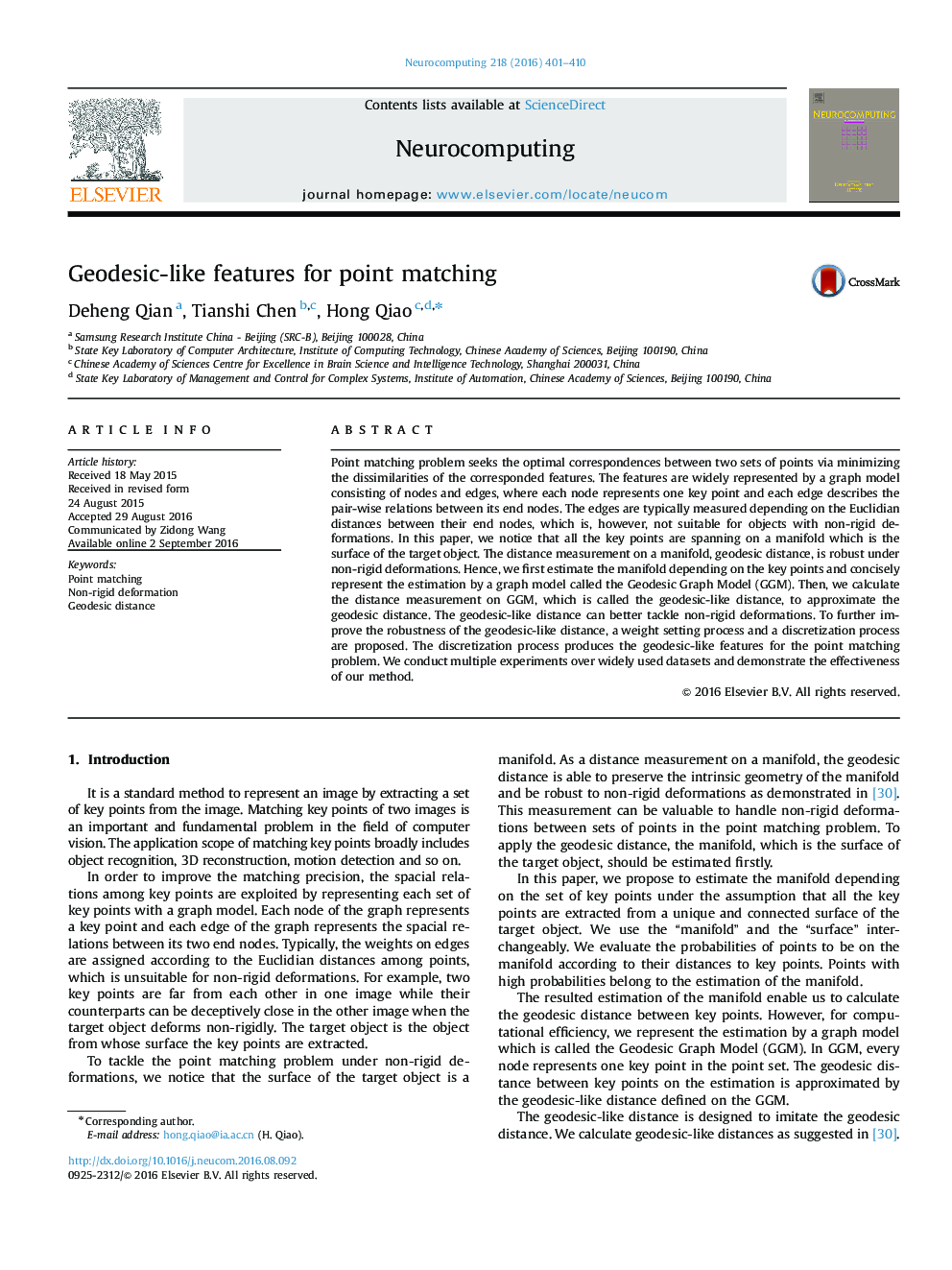| Article ID | Journal | Published Year | Pages | File Type |
|---|---|---|---|---|
| 4948173 | Neurocomputing | 2016 | 10 Pages |
Point matching problem seeks the optimal correspondences between two sets of points via minimizing the dissimilarities of the corresponded features. The features are widely represented by a graph model consisting of nodes and edges, where each node represents one key point and each edge describes the pair-wise relations between its end nodes. The edges are typically measured depending on the Euclidian distances between their end nodes, which is, however, not suitable for objects with non-rigid deformations. In this paper, we notice that all the key points are spanning on a manifold which is the surface of the target object. The distance measurement on a manifold, geodesic distance, is robust under non-rigid deformations. Hence, we first estimate the manifold depending on the key points and concisely represent the estimation by a graph model called the Geodesic Graph Model (GGM). Then, we calculate the distance measurement on GGM, which is called the geodesic-like distance, to approximate the geodesic distance. The geodesic-like distance can better tackle non-rigid deformations. To further improve the robustness of the geodesic-like distance, a weight setting process and a discretization process are proposed. The discretization process produces the geodesic-like features for the point matching problem. We conduct multiple experiments over widely used datasets and demonstrate the effectiveness of our method.
